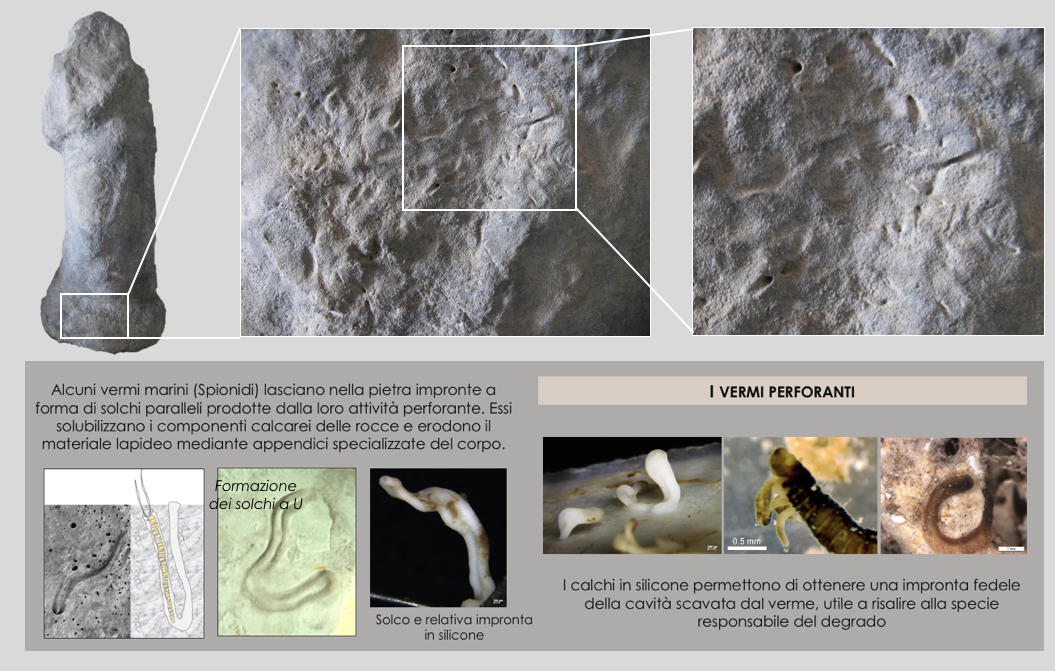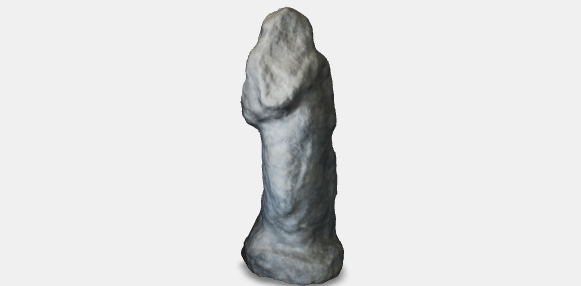The statue is barely roughed out, therefore its identification is particularly problematic. However, it is possible to perceive the silhouette of the figure that in some ways recalls the statue type known as Pudicitia. This popular type was used mainly to represent iconic female figures and funerary reliefs to celebrate the virtues of Roman matrons between the beginning of the I century B.C. and the Augustan age. In Roman times, these statues were often losing the peculiar characteristics of the originals, made in Anatolia around the mid-II century B.C.

The statue’s surface is in good conditions, without biofouling. Small circular holes (pitting) are visible on the lower part, probably caused by the growth of Clionaidae.
Short grooves or grooves with a different orientation are more common, with single or paired terminal holes that penetrate in the stone. Moreover, the presence of sinuous abrasions adjacent to the aforementioned holes allows for attributing the degradation to boring sea worms.
Davidde B., Ricci S., Poggi D., Bartolini M., 2010. Marine bioerosion of stone artefacts preserved in the Museo Archeologico dei Campi Flegrei in the Castle of Baia (Naples), Archaeologia Maritima Mediterranea; 7: 75-115.
Ricci S., Sacco Perasso C., Antonelli, F., Davidde Petriaggi B., 2015. Marine Bivalves colonizing roman artefacts recovered in the Gulf of Pozzuoli and in the Blue Grotto in Capri (Naples, Italy): boring and nestling species. International Biodeterioration & Biodegradation (98) 89 – 100.
Ricci, S., Pietrini, A. M., Bartolini, M., Sacco Perasso, C., 2013. Role of the microboring marine organisms in the deterioration of archaeological submerged lapideous artifacts (Baia, Naples, Italy). International Biodeterioration & Biodegradation 82 (2013) 199-206.
Ricci S., Davidde B., Bartolini M., Priori G. F., 2009. Bioerosion of lapideous objects found in the underwater archaeological site of Baia (Naples). Archaeologia Maritima Mediterranea, 6: 167-188.
Zevi, F., 2008 (a cura di), Museo Archeologico dei Campi Flegrei, Catalogo generale, Pozzuoli, p. 139



